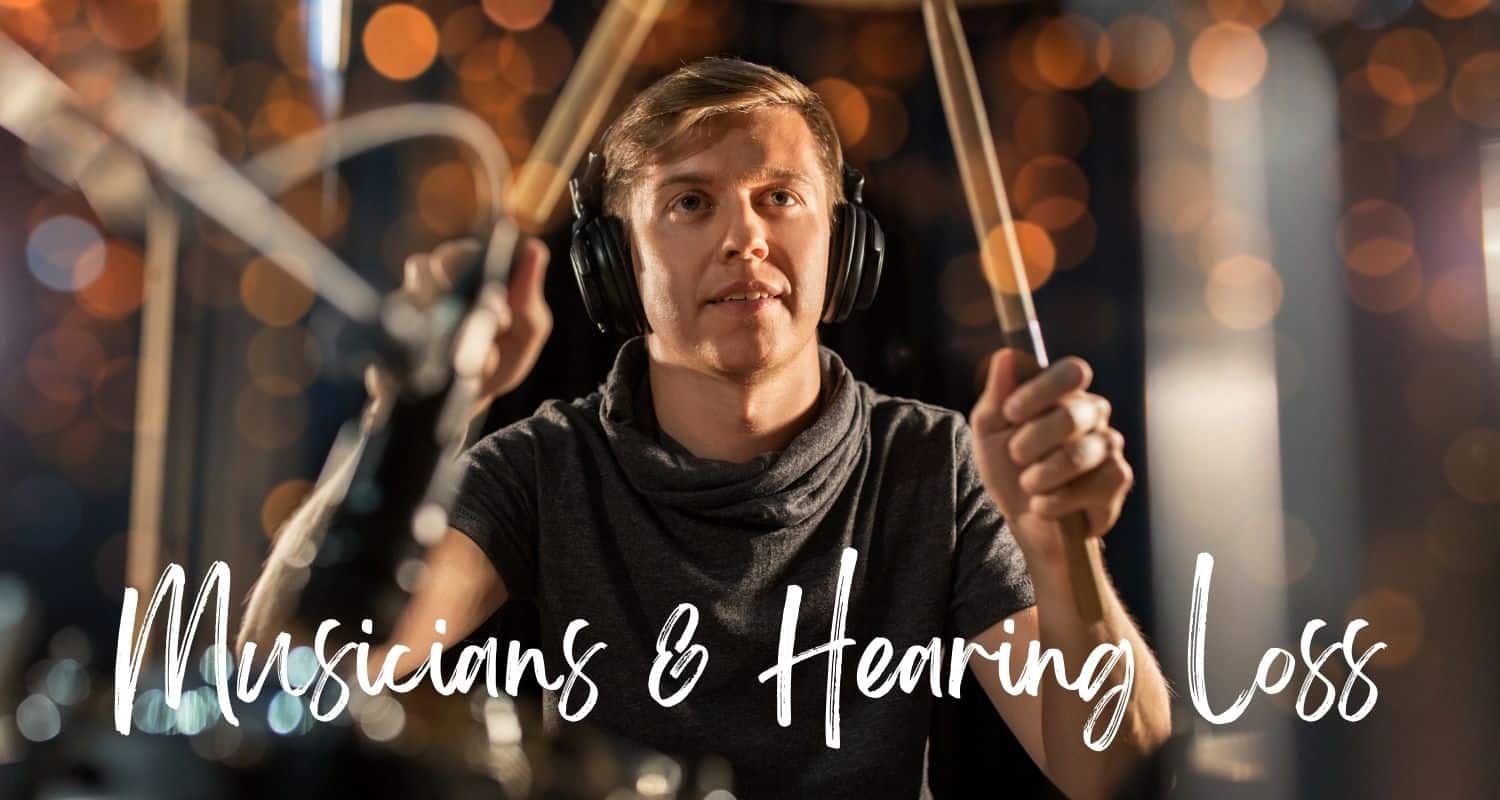When we think of noise-induced hearing loss (NIHL), many of us immediately conjure an image of a rock concert—a big stage with huge guitar amplifiers, and a massive PA system that seems like it could project sound to the other side of the world. Maybe you’ve been to a concert like this, without wearing hearing protection, and had the experience of your ears ringing for a day or two afterward.
Musicians Are at an Increased Risk of Hearing Loss
Of course, the musicians and other professionals who put on these concerts are not exposed just once, but nearly every night for the duration of the tour. While the use of hearing protection is now ubiquitous among entertainment professionals, this was not the case for the first few decades in which these “megaconcerts” were taking place.
The list of famous entertainers who have hearing loss and/or tinnitus (ringing in the ears) is long. Huey Lewis canceled his tour in 2018, announcing that he could no longer hear music clearly enough to sing. Both Roger Daltrey and Pete Townshend of The Who have lived with hearing loss for many years now. Neil Young, Jeff Beck, and even Coldplay’s Chris Martin suffer from persistent tinnitus. Martin says his tinnitus is even accompanied by debilitating headaches.
Not Just Rock&Rollers
While it’s tempting for those in the hearing care industry to lean on the stories of these rock musicians to spread the word about hearing loss, focusing on famous rock and roll stars can be misleading. This is because it doesn’t take a stadium full of sound to cause NIHL, and the majority of musicians who suffer from hearing loss are not rock musicians.
Legendary jazz musician Herbie Hancock has also battled hearing loss, and was fitted with hearing aids in 2006, saying at the time that he wished he had worn earplugs throughout his career. While jazz is often played in smaller clubs and sometimes even without sound reinforcement, the sound produced by horns and drummers can easily damage hearing, especially when we consider that performance is only part of a jazz musician’s routine. Practice, teaching, and rehearsal can all contribute to the development of hearing loss, even though these activities may not reach the loudness levels of a Who concert.
Classical musicians, just the same as jazz musicians, spend a great deal of time in practices, rehearsals, and teaching. Orchestral players, by and large, have the greatest likelihood of developing hearing loss among musicians. Regular exposure to the sound levels achieved inside an orchestra is a recipe for hearing loss.
About NIHL
Noise-induced hearing loss isn’t just about the loudness of the sound you experience, but also the duration. While it is possible for a sound to be so loud that it instantly causes permanent deafness, this is extremely rare. Most NIHL is accrued over a long period of time, little by little, day by day.
Sound levels averaging as soft as 85 dBA (decibels A-weighted) can cause permanent hearing loss after about 8 hours of exposure. 85 dBA is the low end of a cello’s dynamic range. For every additional 3 dBA, the safe time of exposure is cut in half. That means that sound levels reaching 100 dBA cause hearing loss in about 15 minutes. The upper end of a cello’s dynamic range is around 111 dBA. At that volume level, hearing loss occurs in a little over one minute.
Decibel levels get lower as we move further away in space from the sound source. In fact, for every doubling of distance from the position at which dBA is measured, the level will drop a little over 6 dBA. So if we stand two feet from a cellist and measure the average level of their music at 110 dBA, by simply taking a step back (2 more feet) we reduce our experienced sound level to 104 dBA. Take two more steps back (now a total of 8 feet away) and our ears are receiving about 98 dBA. Understanding this principle can make it easier to see why a musician themself would be more likely to sustain hearing loss than even their most ardent supporter!
Custom Hearing Protection
If you are a musician or music fan, custom hearing protection is a must-have. Many OTC earplugs claim to offer “natural sound” but always seem to change the sound of the music. Custom earplugs are designed to fit your ear canals perfectly, and can be fitted with a range of attenuators that will be appropriate to the sound levels you expect to experience. Best of all, they provide the most accurate representation of the frequency spectrum of any earplugs available. Music sounds truly natural, so you can play naturally.
Hearing Aids
If you do have hearing loss, hearing aids are the best way to maintain your ability to enjoy music, and have been shown to have many benefits for maintaining health and well-being. Make an appointment for a hearing test today, and take charge of your hearing health!
Our Reviews
Pueblo, Colorado (Main Office)
Address
1800 Fortino BlvdPueblo, CO 81008
Phone
(719) 568-9700Hours
Monday - Thursday: 8AM - 4PM
Friday: 8AM - Noon



